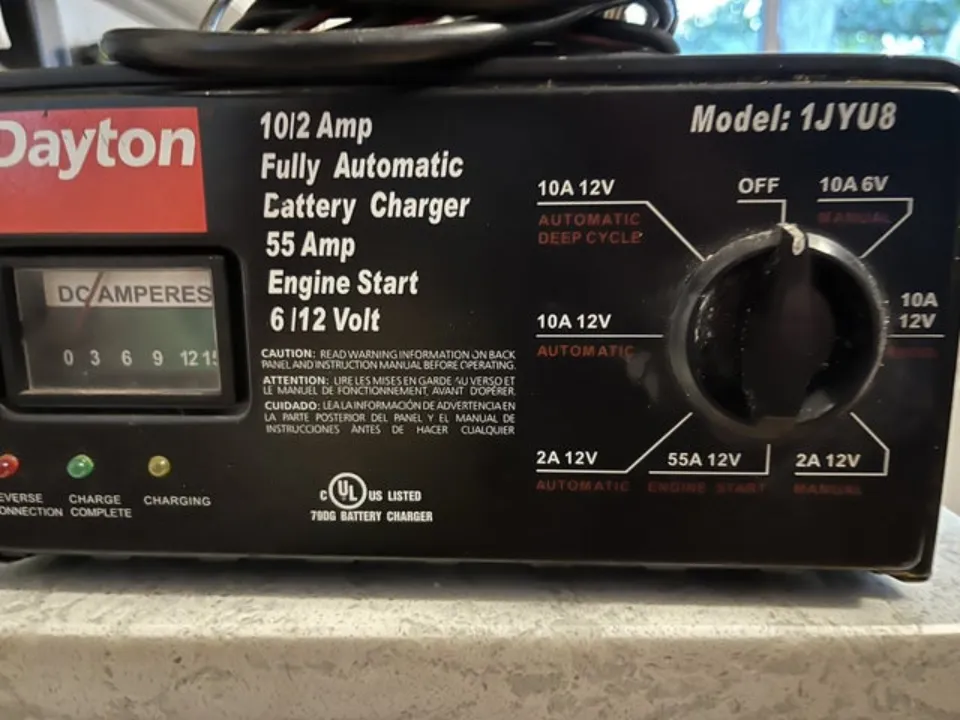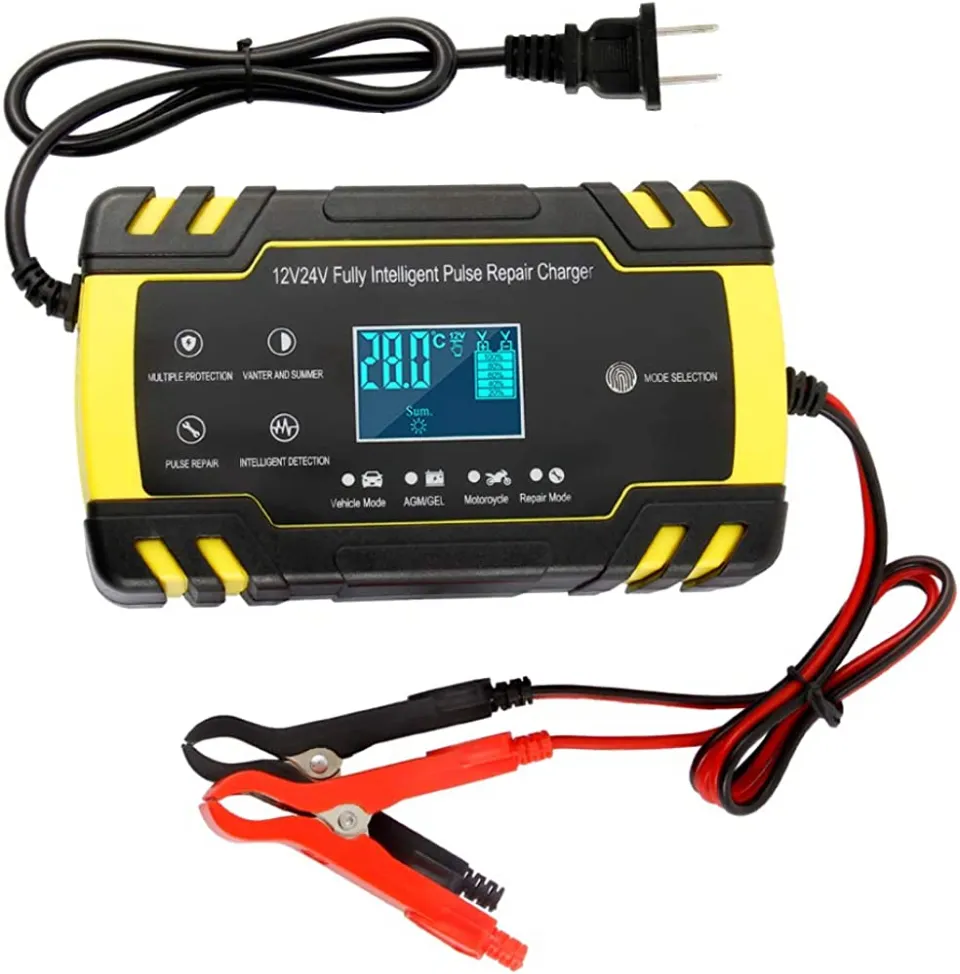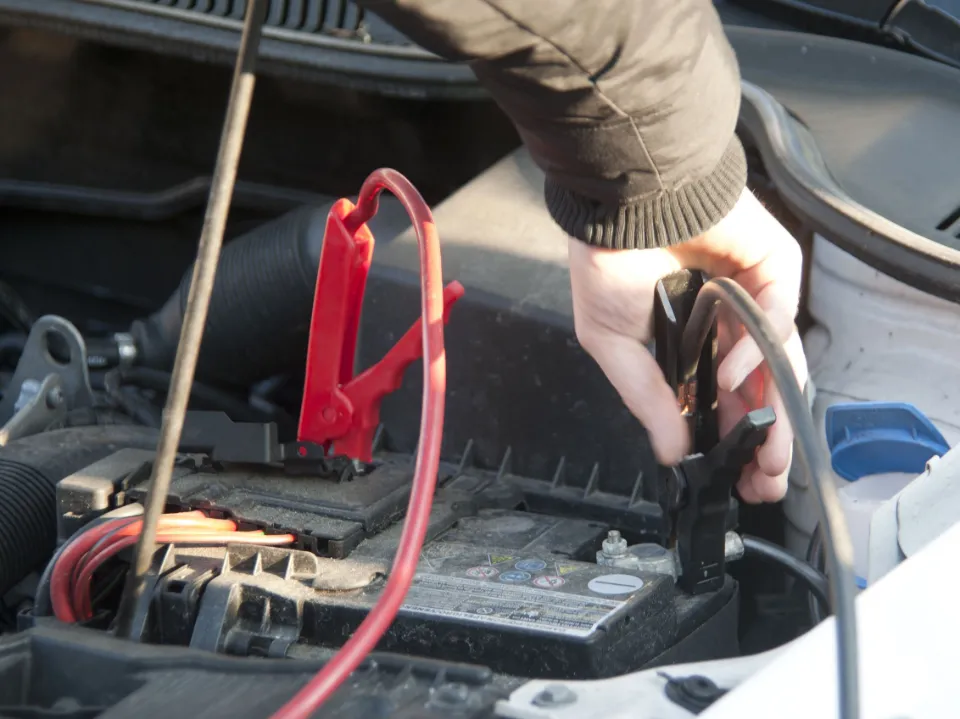
How to Read a Battery Charger Precisely
Different sizes and shapes are available for battery chargers. In addition to offering information on the battery’s status and condition, high-quality battery chargers come with a number of safety features that guard against overcharging. An LED light, a voltage regulator, and an automatic shutoff feature are safety features. A battery that is overcharged runs the risk of exploding, which makes it hazardous. When the battery has been fully charged, the battery charger’s indicators will let you know. It’s important to understand how to read a battery charger’s ammeter because it enables you to modify the battery charging time. To find it, read this article.

Table of Contents
Types of Car Battery Charger
Your car battery will be charged at a different rate by different car battery chargers. Utilizing the proper amperage battery charger for your car’s battery is crucial. Overcharging a battery can result in an explosion, as can using a charger with an amp rating that is too high for the battery. To avoid harmful overcharging, many modern chargers have safety features like voltage regulators and auto-shutoff functions.
Let’s take a quick look at the different types of car battery chargers that are available:
40 amp car battery charger – Car batteries can be charged quickly and effectively with a 40 amp charger. Your car will start up again in just a few minutes with a 40 amp battery charger.
10 amp car battery charger – Your car’s battery may need to be recharged for several hours using a 10 amp battery charger. An enormous battery that has been completely discharged can be charged using a 10 amp battery charger in 8 to 14 hours. It will take roughly 6 to 8 hours to fully charge a medium-sized battery.
4 and 2 amp car battery chargers – 4 and 2 amp battery chargers take a long time to recharge a fully depleted battery and will only work on smaller car batteries. A 48 amp battery charges in about 12 hours on a 4 amp charger, but it might take an entire day on a 2 amp charger.
How to Read a Battery Charger Amp Meter
The “draw” of energy and the “continuity” of the electrical current are measured by the amp meter on a battery charger along with the amount of energy stored in the vehicle’s battery. Your amp meter will both display the amount of power in your battery and track the amperage as the vehicle battery charges.
To track the amps flowing through the electrical current going to your car battery, use a digital or analog amp meter. Digital amp meters have no moving parts, are simple to read, and show all the information on an LED screen. The needle on analog amp meters moves, making them more difficult to read.
We have prepared an easy-to-follow step-by-step manual to assist you in understanding how to read an analog battery charger amp meter.
You must safely connect your charger to the car battery before you can read your amp meter. Here is a brief guide on how to connect a charger to a car battery:
Step 1 – Wear safety glasses and take off all of your jewelry.
Step 2 – Make sure the car is off and disconnect the battery.
Step 3 – When you connect the charger to the battery, it should be unplugged.
Step 4 – The positive battery charger clip should be connected to the battery’s positive terminal, and the negative clip should be connected to the battery’s negative terminal. The positive cable will be red and the negative will be black, so be careful not to get this step wrong.
Step 5 – When you turn on the charger, your car battery will start charging right away, and after the needle has settled (if you’re using an analog amp reader), you can check the electrical current that is going into and powering the battery.
Now that you understand the safe and proper methods for connecting a car battery charger, you must learn how to read an amp meter.
Reading An Amp Meter
Only instructions on how to read an analog battery charger amp meter will be provided because reading a digital amp meter is fairly simple.
Step 1 – The amp meter’s needles will oscillate before settling on the correct reading when the battery charger is turned on.
Step 2 – The needle will eventually settle in one location; at that point, you will have an accurate reading of the amps. This amp reading needs to be in line with the charger setting you chose, such as 10 amps or 2 amps. Additionally, you will be able to see the battery’s current charge by looking at the percentage that the needle is pointing at.
Step 3 – Set your battery charger to 2 amps if you prefer a slower charge. Your amp meter’s needle will adjust to the change by moving towards 2 on the “charge rate” scale at the bottom. Use the higher setting to charge more quickly.
Step 4 – The needle on the amp meter will slowly descend from 10 amps (if set to the 10 amp setting) as the charger completes its task.
Step 5 – When the current being delivered to the battery by the battery charger abruptly decreases, the battery charger is operating at maximum efficiency.
Step 6 – The charger delivers fewer amps to the battery as it approaches full charge. The amp meter’s needle will point downward toward decreasing amps on the amp reader’s charge rate scale. This needle should be at zero when your battery is fully charged because no more amps are being delivered to the battery by the charger.
Step 7 – On your amp meter, you can also read the percent charged monitor. Your car battery’s state of charge is indicated by this reading. Your car battery’s current charge will be indicated by the needle, which will point in that direction as the battery charges. When the battery is fully charged, the needle should end on 100%.
Step 8 – The displays on your amp reader also have green and red triangles in addition to numbers. Although they don’t offer you any additional information, these triangles can still be used to clarify where the needles are pointing. The red triangle denotes the charging rate you’ve chosen, such as 10 amps or 2 amps. How much power is needed to fully charge the battery is indicated by the green triangle. As your battery charges, the needle ought to transition from the red triangle to the green triangle.

Conclusion
Charging a car battery is a simple process, but it is important to know when your battery is fully charged. You can monitor the charge of your car battery and be aware of how many amps are being passed from the charger into the battery by learning how to read an amp meter correctly.
In this article, we’ve provided a simple, step-by-step tutorial that we hope has helped you learn how to read a battery charger amp meter.
FAQs
How Many Amps Do I Require to Charge a Car Battery?
A minimum of 10% of the Ah rating of your car battery should go into your battery charger. Use a charger that is at least 10 amps strong if your car’s battery is 100Ah. Use a battery charger with a higher amp rating if you want to charge your car battery more quickly.
Which Rate of Battery Charging—2 Amps Or 10 Amps—is Preferable?
Always use a battery charger that can fully charge your battery without damaging it. Smaller batteries or batteries with a low Ah rating may be overcharged and damaged by higher amp chargers. When charging smaller batteries, like those in a motorcycle or mobility scooter, it is a good idea to use a 2 amp charger.
Additionally, a 2 amp battery charger is your safest option if you plan to leave your car unattended while the battery is being charged because it takes a long time to charge big batteries and there is no chance of overcharging the battery with one of these chargers. The best options for charging car batteries quickly are ten-amp battery chargers and higher amp alternatives.
What Should a Battery Read When It is Fully Charged?
You can use a voltmeter or an amp meter to measure the volts or amps to determine whether your car battery is fully charged. In this article, we’ve shown you how to use an amp meter to determine whether your battery is fully charged. You can use a voltmeter to determine the voltage flowing through your car battery. The voltage of a fully charged car battery should be 12.6 volts or higher.
How Long Does It Take a 6 Amp Charger to Fully Charge a Car Battery?
The average car battery has a 48 amps per hour capacity, which translates to 1 amp for 48 hours, 2 amps for 24 hours, 12 amps for 6 hours, and so on.
It takes roughly 12 to 13 hours to provide the 48 amps necessary to fully charge a battery because a charger typically charges at a rate of 6 amps.

